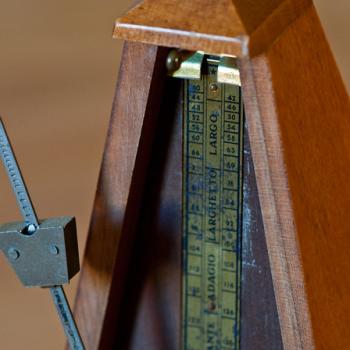
Taking Time for Stillness
When will we begin taking time for stillness?
We value our time. Some of us believe time is money. We do not want anyone else to waste our time. It is almost as if we could hoard spare moments or days in boxes to use them later.
Some of us pay attention to time management. We want to use our time as effectively as we can. Some of us are convinced each second counts. We want to squeeze all the value we can from each minute.
We might be counting the days, or the hours, until Christmas.
I know people who are counting the weeks until they retire. They are eager for the day when their time is their own. They believe there will no longer be anyone telling them how to spend their time.
It is not clear to me whether people who work so hard to save time actually savor it more. They seem to create games around saving time to convince themselves they are winning.
At the end of each day, every one of us has the same amount of time. None of us has saved even a second to carry over to the next day. There are no time reserves.
We may not be able to save time, but we can spend it and invest it well. As we spend our time each day, it seems to me time is a matter of quality over quantity. We cannot add to our available supply of time, or even know how much we have.
It is not about how much time will we have in our lives, but how much life will we have in our time. Is there anything we can do to make the time we have more valuable?
When We Begin Taking Time for Stillness
We hear people talk about sacred spaces. Actors and directors tell us the theatre becomes sacred space for them. Some people describe places where boundaries between physical life and spiritual life become thin.
Spiritual life helps us create and recognize sacred space. Another dimension of spiritual life is sacred time.
There are moments of awareness when time seems to stand still for us. The ways we usually experience time seem to melt away. Time appears not to follow the rules we assume we can impose on it in our everyday lives. It overflows its banks, or evaporates, or freezes.
Time is infused with spiritual life and escapes our expectations.
Remembering can transport us through time into spiritual life. We visit new places, read new books, listen to new stories and transcend into sacred time.
There are people who help me experience sacred time, help me recognize spiritual life. We share our stories, listening and asking questions, and we laugh and cry together. The time we spend together is different from other time. Sacred time swirls around us. Spiritual life surrounds us and fills us.
As we listen deeply, the everyday life around us fades into the background. Distractions disappear from view. Spiritual life draws us into calm, centered awareness. Each moment holds spiritual truths for us to discover and explore. Taking time to listen, we become open to the wisdom all around us.
We sit in sacred space, immersed in sacred time. Taking time for stillness, we have what we need to pay attention and reflect.
Spiritual life opens our eyes and hearts to appreciate sacred space and time. We are open to spiritual life and awake to sacred time. Each moment is an opportunity for us to listen to ourselves and to each other.
How We Start Taking Time for Stillness
This year, which has already been unusual for many of us, could be an opportunity to begin taking time for stillness.
The first step is to add listening to sacred stillness to our calendars. If beginning a practice of contemplative listening is important to us, we need to plan the same way we would for any other commitment.
Setting a regular time for contemplative listening will help us develop a practice.
We also need to decide on a regular place to practice. Committing to a time and place will help us overcome many potential obstacles.
We go to the place we have chosen at the time we want to begin taking time for stillness. This practice is not about squeezing every bit of value we can from this time. We practice being open to spiritual life in the sacred stillness within us and all around us.
This is not a scheduled nap time, though we will find ourselves relaxing and resting. We listen to what the stillness has to tell us.
The sacred stillness around us and within us draws us and embraces us.
Sitting comfortably, closing our eyes, breathing deeply, we begin to listen.
Taking Time for Stillness Shapes Us
Our practice of taking time to listen to sacred stillness has lessons to teach us. We will learn to become more attentive listeners, and we will learn lessons about our own true selves.
Other people may notice how our practice is changing us before we do. Developing a new practice can often feel like a struggle as we focus on the mechanics of what we are trying to do. The people around us will appreciate we have become more patient, or better listeners.
Over time we will recognize ourselves taking time for stillness more often as our practice develops us.
We will come to appreciate how taking time for stillness helps us organize and use our time more wisely. Our priorities and values become more clear to us, and we put them into practice in our everyday lives.
Eventually we learn time is a tool for us to use in living well. We are not intended to simply react to the demands time places on us, but to invest our time wisely.
How will we begin taking time for stillness today?
When do we plan to be taking time for stillness this week?
[Image by becosky…]
Greg Richardson is a spiritual life mentor and coach in Southern California. He has served as an assistant district attorney, an associate university professor, and is a lay Oblate with New Camaldoli Hermitage near Big Sur, California. Greg’s website is StrategicMonk.com and his email address is [email protected].












